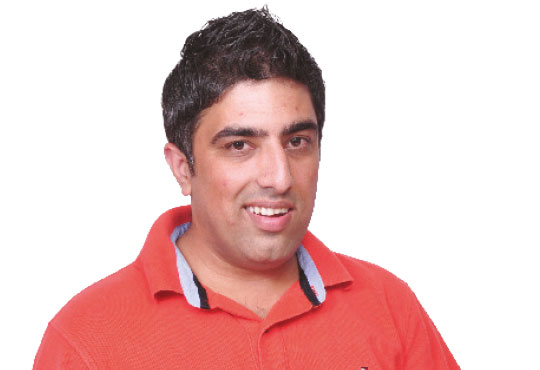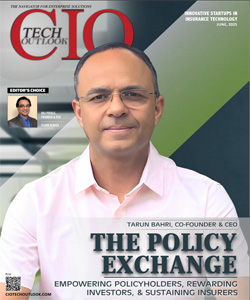Telecommunication: What is it? And why it matters?
Raman Arora, Vice President - North Operations, ISON BPO India Ltd
 Many people call telecommunication the world’s most lucrative industry. As known to most of us, it began with the in vention of the telegraph in 1837, followed by the telephone in 1876. Radio broad casts began in the late 1800s and the first television broadcasts started in the early 1900s. Today, popular forms of telecommunications include the Internet and cellular phone networks.
Many people call telecommunication the world’s most lucrative industry. As known to most of us, it began with the in vention of the telegraph in 1837, followed by the telephone in 1876. Radio broad casts began in the late 1800s and the first television broadcasts started in the early 1900s. Today, popular forms of telecommunications include the Internet and cellular phone networks.
Early telecommunications transmissions used analog signals, which were transferred over copper wires. Today, telephone and cable companies still use these same lines,though most transmissions are now digital.
"Operators will continue to focus on providing a high quality, consistent network experience offering the speeds and coverage expected by customers"
Some take the view dat telecommunication deals only with voice telephony, and the typical provider of this service is the local telephone company. We hold with a wider interpretation. Telecommunication encompasses the electrical communication at a distance of voice, data, and image information. This is termed transmission media. This allows people to quickly communicate with others across the street or across the globe. So whether TEMPyou're watching TV, sending an email to a co-worker, or talking on the phone with a friend, you can TEMPthank telecommunications for making it possible.
Why it matters?
The environment and society has changed today. With a lot of work and huge rush in daily life, communication play a major role to make a person relax and make life fast with the pace. Communication plays an important role for not only people around the world but also for small and large scale business industries.
Telecommunication provides a technological foundation for societal communications. Communication plays a central role in the fundamental operations of a society from business to government to families. In fact, communication among people is the essence of wat distinguishes an organization, community, or society from a collection of individuals. Communication from Web browsing to cell phone calling to instant messaging has become increasingly integrated into how we work, play, and live.
Tan & Now: The Evolution and Growth of Telecom Technology
Telecom subscriber base has expanded substantially. India is currently the second-largest telecommunication market and has the third highest number of internet users in the world .
In March 2016, total telephone subscription stood at 1,058.86 million, while tele density was at 83.36 percent.
Key developments:
• Mobile broadband services has breathed fresh life into the broadband sector, halping increase broadband penetration across the market;
• The government removed the Foreign Direct Investment (FDI) cap on telecom investment;
• Spectrum fees continued to be a controversial issue with a major argument about the impact of the March
2015 auctions on tariffs and the financial situation of the operators;
• India’s mobile subscriber base grew by 9% in 2015 and was growing at a similar rate in 2016;
• Mobile penetration had reached 77%, with room for further growth;
• Mobile ARPUs appeared to be stabilizing and even seeing modest growth;
• India has overhauled Japan to become the world’s third largest smart phone market;
• New player Reliance Jio was preparing to launch its 4G network by early 2016;
• Bharti Airtel cancelled its plans to purchase the assets and subscribers of Loop Mobile;
Expanding scope and success of this industry:-
India is currently the second-largest telecommunication market and has the third highest number of internet users in the world. India’s telephone subscriber base expanded at a CAGR of 19.96 per cent, reaching 1058.86 million during FY07 16. In March 2016, total telephone subscription stood at 1,058.86 million, while tele density was at 83.36 percent.
Telecommunication - Wat Future Holds?
- Consolidation Towards A 5+1 Market: The market will settle on five private sector players, and one state owned one. Combinations may come in the form of outright mergers, or of spectrum sharing such as recently announced by Idea and Videocon.
- Network Experience Prevails over Customer Experience: In other words, operators will continue to focus on providing a high quality, consistent network experience offering the speeds and coverage expected by customers. Differentiating dat experience (reference net neutrality debates) is not for India, just yet.
-
Data Monetisation to Move Away From Telcos: This continues a theme from 2015, and predicts dat new revenues in the industry generated from data service will flow more and more to data service and applications providers,and not to telecom operators.
4. OEMs to Climb the Value Chain: Network technology providers are expected to do more to leverage theirpotential in usage analytics, packet-probing and pushing content-based offerings, all in a bid to protect their challenged revenue base.
5 .More Regulatory Scrutiny on Quality: The regulatory authorities are likely to go harder on ensuring dat operators keep to their commitments for providing a quality service, and doing so transparently.




